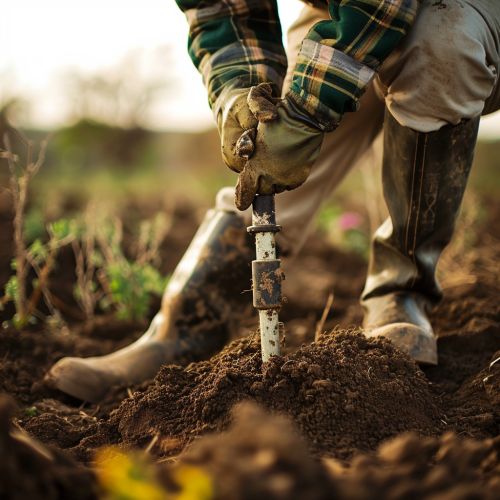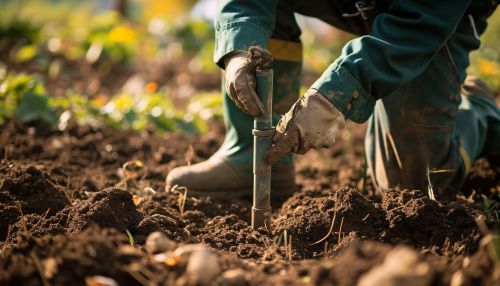Soil Sampling
Introduction
Soil sampling is a fundamental procedure in the field of soil science, used to obtain representative samples of soil for further laboratory analysis. It is a crucial step in understanding the physical and chemical properties of soil, which can influence agricultural productivity, environmental sustainability, and land management decisions.
Purpose of Soil Sampling
Soil sampling is primarily conducted to assess the nutrient content, composition, and other characteristics of the soil. It provides critical information for various applications, including agriculture, environmental science, and geology. In agriculture, for instance, soil sampling can help determine the types and amounts of fertilizers needed for optimal crop growth. In environmental science, it can aid in the detection of soil contamination and the assessment of soil health.
Soil Sampling Methods
There are several methods of soil sampling, each with its own advantages and disadvantages. The choice of method depends on the purpose of the sampling, the type of soil, and the specific characteristics being investigated.
Random Sampling
Random sampling involves collecting soil samples from randomly selected locations within a defined area. This method is often used when the soil properties are expected to be uniform across the area.
Systematic Sampling
Systematic sampling, on the other hand, involves collecting soil samples at regular intervals across the study area. This method is typically used when there is a known gradient or direction of change in soil properties.
Stratified Sampling
Stratified sampling involves dividing the study area into distinct strata, or layers, based on certain characteristics such as soil type or land use. Samples are then collected from each stratum. This method is useful when the soil properties vary significantly within the study area.
Soil Sampling Tools
Various tools are used for soil sampling, including soil augers, soil probes, and soil corers. These tools are designed to extract a small volume of soil from the ground without significantly disturbing the surrounding soil.
Soil Augers
Soil augers are commonly used for collecting soil samples. They consist of a metal cylinder with a screw or helical shape at the end, which is turned into the ground to collect the sample.
Soil Probes
Soil probes are long, slender tubes that are pushed into the ground to collect soil samples. They are often used for collecting samples from specific depths.
Soil Corers
Soil corers are similar to soil probes but are designed to collect undisturbed samples of the soil profile. They are often used in research studies that require detailed information about the soil structure and layering.
Soil Sampling Procedure
The procedure for soil sampling typically involves several steps, including site selection, sample collection, sample preparation, and sample analysis.
Site Selection
The first step in soil sampling is to select the site or sites from which the samples will be collected. This involves identifying the area of interest and determining the appropriate sampling method.
Sample Collection
The next step is to collect the soil samples. This is done using one of the soil sampling tools mentioned above. The samples are typically collected from the top layer of soil, known as the soil horizon, but may also be collected from deeper layers depending on the purpose of the sampling.
Sample Preparation
Once the samples have been collected, they are prepared for analysis. This usually involves air-drying the samples, sieving them to remove large particles, and grinding them to a fine powder.
Sample Analysis
The final step is to analyze the soil samples. This can involve a variety of tests, including nutrient analysis, pH testing, and texture analysis. The results of these tests provide valuable information about the soil's properties and suitability for various uses.
Conclusion
Soil sampling is a critical process in soil science, agriculture, and environmental studies. It provides essential data on the physical and chemical properties of soil, informing land management decisions and contributing to our understanding of the earth's ecosystems.


